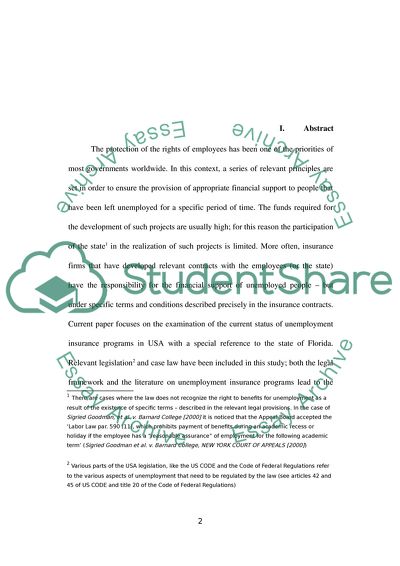Cite this document
(Unemployment Insurance Programs Research Paper Example | Topics and Well Written Essays - 3750 words, n.d.)
Unemployment Insurance Programs Research Paper Example | Topics and Well Written Essays - 3750 words. Retrieved from https://studentshare.org/marketing/1717100-unemployment-insurance-programs-have-become-outdated-and-are-in-need-of-an-overhaul-that-would-both-share-the-cost-of-such-a-program-as-well-as-move-the-program
Unemployment Insurance Programs Research Paper Example | Topics and Well Written Essays - 3750 words. Retrieved from https://studentshare.org/marketing/1717100-unemployment-insurance-programs-have-become-outdated-and-are-in-need-of-an-overhaul-that-would-both-share-the-cost-of-such-a-program-as-well-as-move-the-program
(Unemployment Insurance Programs Research Paper Example | Topics and Well Written Essays - 3750 Words)
Unemployment Insurance Programs Research Paper Example | Topics and Well Written Essays - 3750 Words. https://studentshare.org/marketing/1717100-unemployment-insurance-programs-have-become-outdated-and-are-in-need-of-an-overhaul-that-would-both-share-the-cost-of-such-a-program-as-well-as-move-the-program.
Unemployment Insurance Programs Research Paper Example | Topics and Well Written Essays - 3750 Words. https://studentshare.org/marketing/1717100-unemployment-insurance-programs-have-become-outdated-and-are-in-need-of-an-overhaul-that-would-both-share-the-cost-of-such-a-program-as-well-as-move-the-program.
“Unemployment Insurance Programs Research Paper Example | Topics and Well Written Essays - 3750 Words”, n.d. https://studentshare.org/marketing/1717100-unemployment-insurance-programs-have-become-outdated-and-are-in-need-of-an-overhaul-that-would-both-share-the-cost-of-such-a-program-as-well-as-move-the-program.


